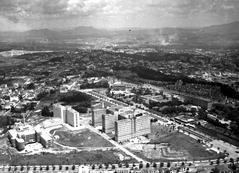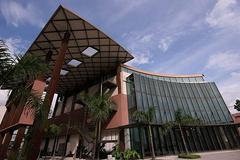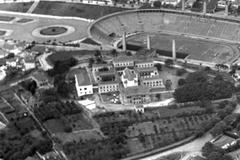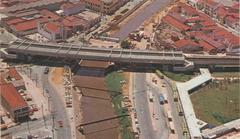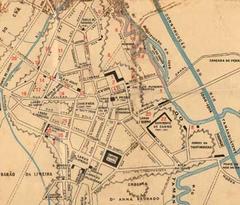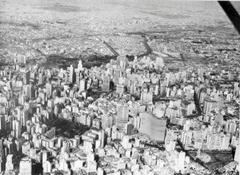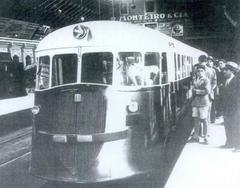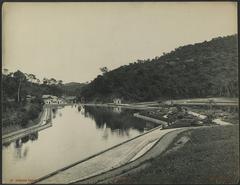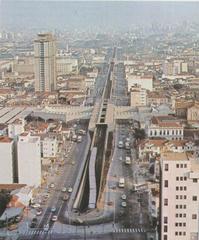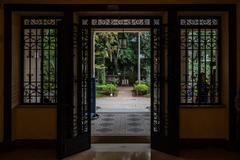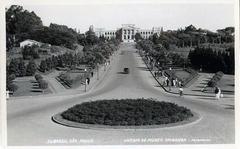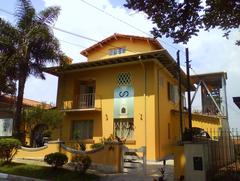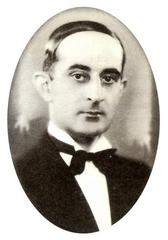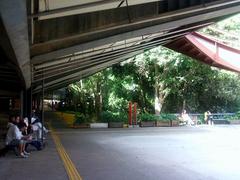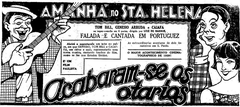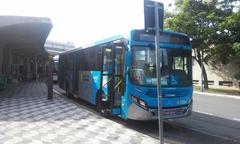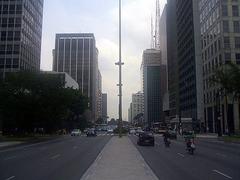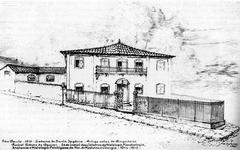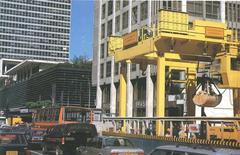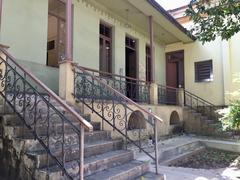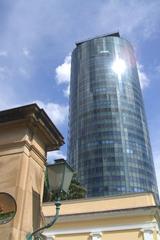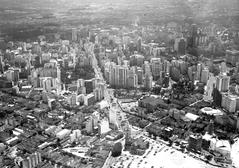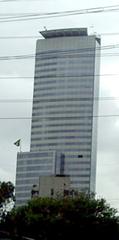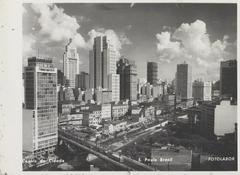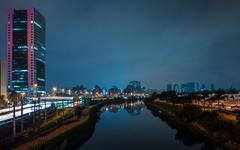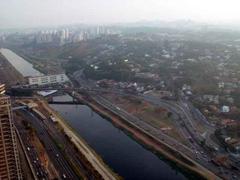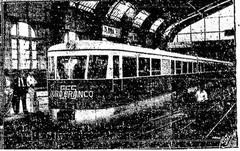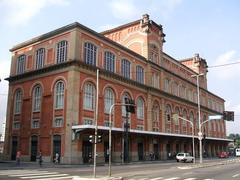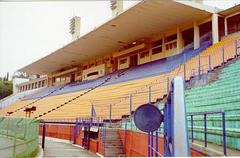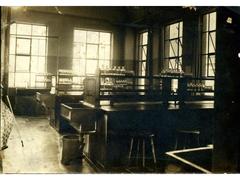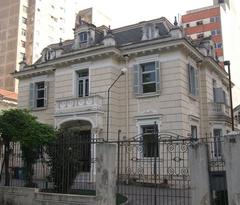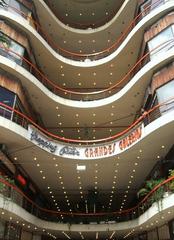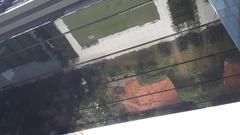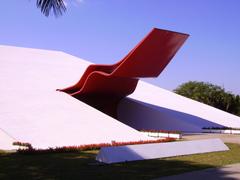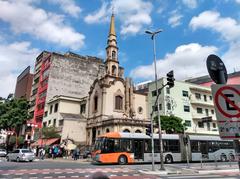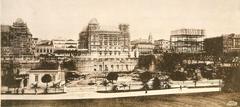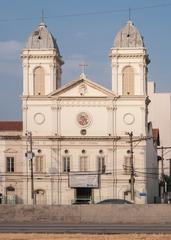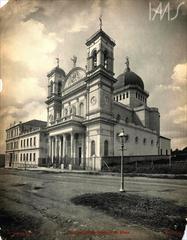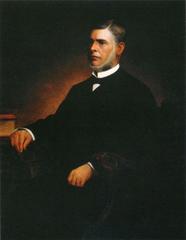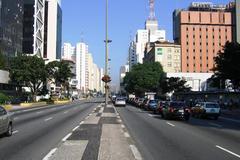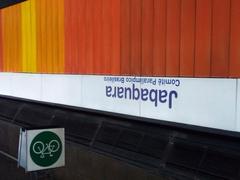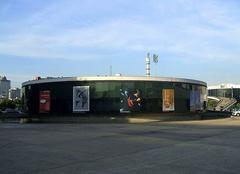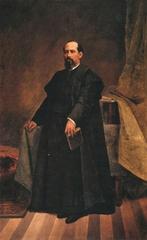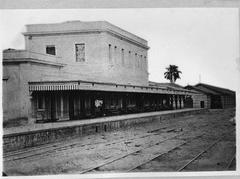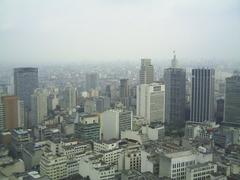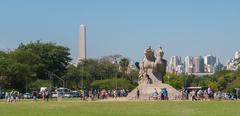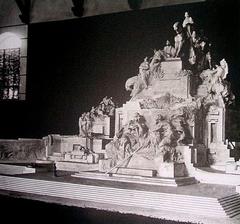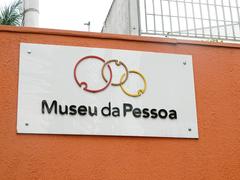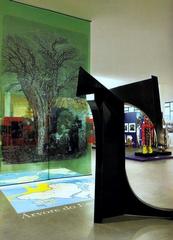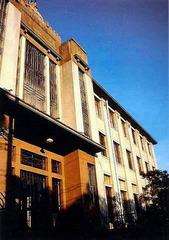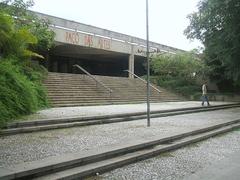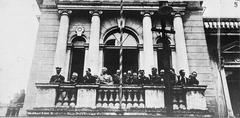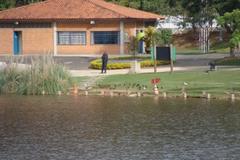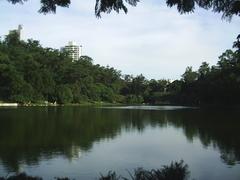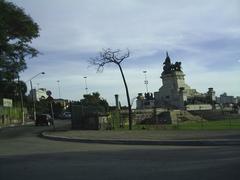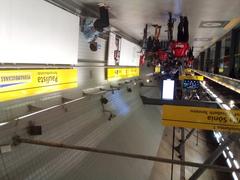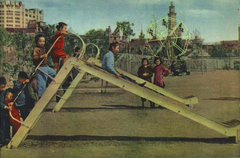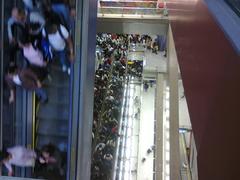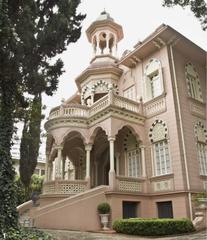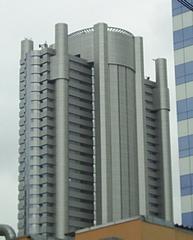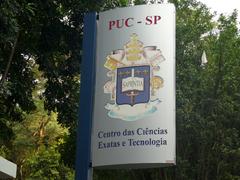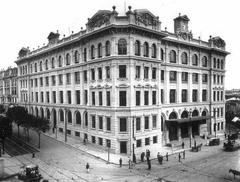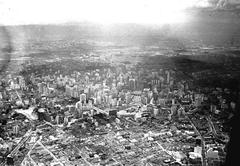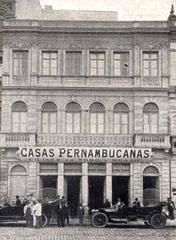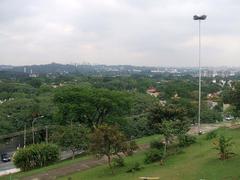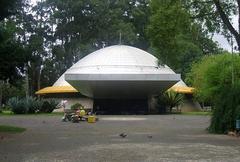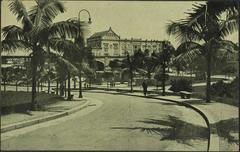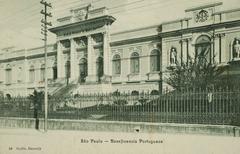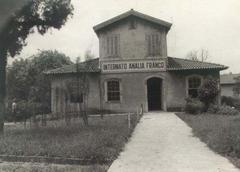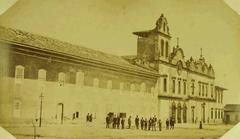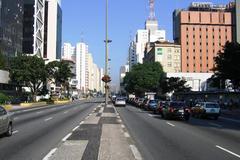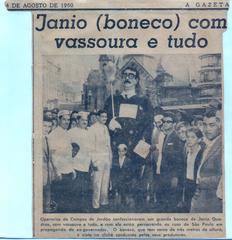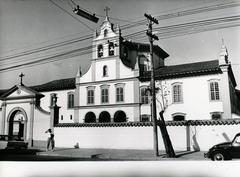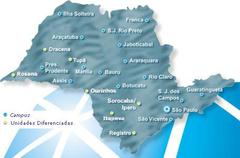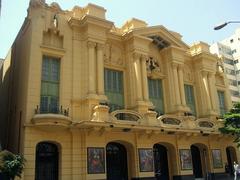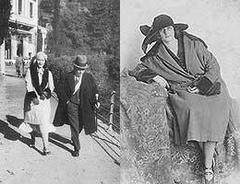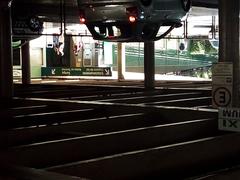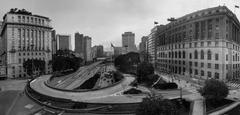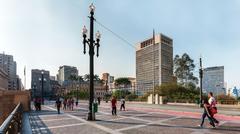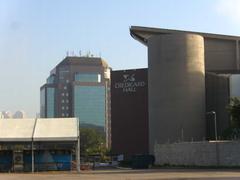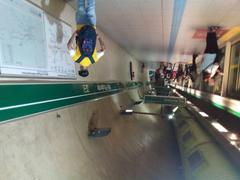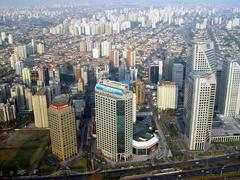
Comprehensive Guide to Visiting São Paulo, São Paulo, Brazil
Date: 13/08/2024
Captivating Introduction
Welcome to São Paulo, where the rhythms of samba intertwine with the hum of traffic, creating a city symphony that’s both electrifying and enchanting. Imagine a metropolis that never sleeps, where skyscrapers pierce the sky, and vibrant street art tells stories on every corner. São Paulo, the pulsating heart of Brazil, is a city of contrasts and surprises, ready to captivate the curious traveler. From its humble origins as a Jesuit mission in 1554 to its modern-day status as Latin America’s largest city, São Paulo’s journey is a testament to resilience and innovation. The city’s history is rich and multifaceted, shaped by Jesuit missionaries, the daring Bandeirantes, and the transformative coffee boom of the 19th century (source) (source).
In this comprehensive guide, we will explore São Paulo’s vibrant cultural scene, stunning architecture, and hidden gems that only locals know. Whether you’re an art lover, a foodie, or an adventurer, São Paulo offers something for everyone. We’ll delve into the city’s iconic landmarks, such as the São Paulo Museum of Art (MASP) and Ibirapuera Park, and uncover lesser-known treasures like Batman’s Alley and the Liberdade District (source). Ready to embark on an unforgettable journey through Brazil’s dynamic metropolis? Let’s dive into the heart of São Paulo and discover its secrets, one vibrant neighborhood at a time.
Table of Contents
- Historical Background
- Discover São Paulo: A Journey Through Brazil’s Vibrant Heartbeat
- Welcome to São Paulo!
- São Paulo Museum of Art (MASP)
- Ibirapuera Park
- Avenida Paulista
- Batman’s Alley
- Liberdade District
- Theatro Municipal
- Mercado Municipal
- Museu do Futebol
- Sé Square and São Paulo Cathedral
- Museu da Língua Portuguesa
- Pinacoteca do Estado
- Parque da Independência and Museu Paulista
- Livraria Cultura
- Itália Building
- Bixiga Neighborhood
- Practical Tips for Visitors
- The Ultimate Guide to São Paulo: Insider Tips and Hidden Treasures
Historical Background
Early Foundations and Jesuit Influence
Welcome to São Paulo, the city where skyscrapers kiss the clouds and samba rhythms fill the streets. Did you know this bustling metropolis was once a humble Jesuit mission? Founded on January 25, 1554, by Jesuit missionaries led by Father Manuel da Nóbrega and Father Joseph of Anchieta, the mission named São Paulo dos Campos de Piratininga aimed to convert the indigenous Guainás people to Catholicism. Strategically located on a plateau between the Tietê, Anhangabaú, and Tamanduateí rivers, it provided a natural defense and fertile land for agriculture.
The Jesuits’ influence extended beyond religious conversion. They built the first school in the region between 1556 and 1557, marking the beginning of formal education in São Paulo. The Jesuit mission also served as a cultural and social hub, fostering interactions between European settlers and indigenous populations.
The Bandeirantes and Expansion
Following the Jesuits, the Bandeirantes, a group of explorers and fortune seekers, played a crucial role in São Paulo’s early development. These adventurers of mixed European and indigenous descent ventured into the interior of Brazil in search of gold, precious stones, and indigenous people to enslave. Their expeditions significantly expanded Portuguese territory and laid the groundwork for future economic activities, such as sugar cane and coffee cultivation.
The Bandeirantes’ activities were pivotal in shaping São Paulo’s early colonial society. Despite their often brutal methods, they contributed to the city’s growth and integration into the broader Brazilian economy. By the end of the 17th century, the trade in African slaves had become well-established, and the Bandeirantes shifted their focus to prospecting for gold, although no significant deposits were found in the São Paulo region.
Economic Shifts and Urban Development
The 18th century marked a period of transformation for São Paulo. With the expulsion of the Jesuits in 1750 by the Marquis of Pombal, their properties were confiscated, and the Jesuit church was repurposed as the administrative headquarters of the Captaincy of São Paulo. This shift in governance facilitated the city’s transition from a religious mission to a burgeoning urban center.
During this period, São Paulo saw the establishment of its first theater, the opera house of Pátio do Colégio, in 1765, and its first cemetery, the Aflitos Cemetery, in 1775. These developments reflected the city’s growing population and its evolving social and cultural landscape. The late 18th century also saw the inauguration of the Botanical Garden, now known as Jardim da Luz, further enhancing the city’s urban environment.
The Coffee Boom and Industrialization
The 19th century brought significant economic changes to São Paulo, primarily driven by the coffee boom. By the mid-1800s, São Paulo had become the largest producer of coffee in Brazil, attracting a wave of immigrants, particularly Italians, who were contracted to work on coffee plantations. This influx of labor and capital spurred rapid demographic and economic growth, transforming São Paulo into a major commercial and industrial hub.
The abolition of slavery in 1888, known as the Golden Law, had a relatively minor impact on São Paulo compared to other regions, as the city had already begun transitioning to a wage labor system. The continued arrival of immigrants, including a significant number of Japanese, further diversified the city’s population and contributed to its economic dynamism.
20th Century Growth and Modernization
The early 20th century was a period of profound transformation for São Paulo. The city emerged as Brazil’s foremost industrial powerhouse, driven by policies implemented by President Getulio Vargas during World War II. Vargas’s nationalist policies focused on creating heavy industries and substituting imports, leading to the establishment of steel mills, oil refineries, and other basic industries. By 1950, industrial production accounted for 80% of São Paulo’s economy.
The city’s rapid industrialization attracted a diverse array of immigrants and internal migrants, including many from northeastern Brazil. These workers played a crucial role in building São Paulo’s infrastructure, including its iconic skyscrapers. Despite the economic challenges posed by the Great Depression and the partial collapse of the coffee trade, São Paulo continued to grow and diversify its economy.
Cultural and Social Evolution
São Paulo’s cultural landscape has evolved alongside its economic development. The city has always been a melting pot of cultures, with significant Italian, Japanese, and Portuguese communities. This multiculturalism is reflected in the city’s vibrant culinary scene, diverse neighborhoods, and rich artistic traditions. São Paulo is home to numerous artists, writers, and musicians, and it continues to be a center for cultural innovation and expression.
In recent years, São Paulo has seen a resurgence in its social and cultural life. The revitalization of the city center, the proliferation of trendy restaurants and clubs, and the emergence of massive murals by accomplished street artists have all contributed to the city’s dynamic and youthful atmosphere. Despite its reputation as a concrete jungle, São Paulo offers numerous green spaces, such as Ibirapuera Park, where residents and visitors can enjoy nature and outdoor activities.
Modern-Day São Paulo
Today, São Paulo is a sprawling metropolis and a major cosmopolitan city, home to over 22 million people. It is the largest city in Latin America and serves as Brazil’s primary economic and industrial center. The city’s infrastructure, including its extensive subway system and modern amenities, supports its status as a global city. São Paulo’s diverse neighborhoods, each with its unique character, offer a wide range of experiences for visitors, from the bustling Avenida Paulista to the bohemian Vila Madalena.
São Paulo’s historical journey from a Jesuit mission to a global metropolis is a testament to its resilience and adaptability. The city’s rich history, cultural diversity, and economic significance make it a fascinating destination for travelers seeking to explore the heart of Brazil. Ready to uncover São Paulo’s secrets? Download Audiala and let our expertly crafted audio guides lead you on an unforgettable journey through the heart of Brazil.
Discover São Paulo: A Journey Through Brazil’s Vibrant Heartbeat
Welcome to São Paulo!
Imagine a city where the beats of samba and the hum of bustling streets merge into a tantalizing symphony. São Paulo, the pulsating heart of Brazil, is a metropolis that never sleeps, always ready to surprise and enchant. Whether you’re an art aficionado, a foodie, or an adventurer at heart, São Paulo has something magical in store for you. Let’s dive in!
São Paulo Museum of Art (MASP)
Art lovers, brace yourselves! Opened in 1968, MASP isn’t just a museum; it’s an architectural marvel. Suspended by striking red beams, its glass and concrete structure houses masterpieces from Renoir to Miró. Imagine standing face-to-face with Degas’ bronze sculptures – a dream come true for any art enthusiast. (source)
Ibirapuera Park
Think of Ibirapuera Park as São Paulo’s green heart. Larger than life, this park is the city’s answer to Central Park but with a Brazilian twist. Whether you’re lounging by the lake, exploring the Museum of Modern Art (MAM), or dancing at one of its vibrant festivals, you’ll feel the city’s heartbeat here. (source)
Avenida Paulista
The pulse of São Paulo beats strongest on Avenida Paulista. This bustling avenue is a kaleidoscope of culture and commerce, lined with shops, theaters, and the iconic MASP. On Sundays, it transforms into a pedestrian paradise, filled with street performers and food stalls. Pro tip: Grab a coffee at a sidewalk café and watch the world go by. (source)
Batman’s Alley
Welcome to Gotham – São Paulo style! Batman’s Alley, or Beco do Batman, is a graffiti lover’s utopia. This vibrant alley in Vila Madalena is a living canvas, with walls that change regularly to showcase the latest street art. Hunt for the original Batman graffiti from the 1980s and snap that perfect Instagram shot. (source)
Liberdade District
Step into Japan in the heart of Brazil. Liberdade is São Paulo’s Japanese district, bustling with authentic restaurants, markets, and cultural events. Visit the Japanese Immigration Museum to delve into the history of Japanese Brazilians, or time your visit during the Tanabata Matsuri festival for a truly immersive experience. (source)
Theatro Municipal
Feel like royalty at the Theatro Municipal. Opened in 1911, this opulent theater, inspired by the Paris Opera, hosts everything from opera to ballet. The grandeur of its interiors will transport you to a bygone era. Don’t miss the guided tours for a deep dive into its lavish history. (source)
Mercado Municipal
Foodies, rejoice! The Mercado Municipal is a feast for the senses. From the famous mortadella sandwich to exotic fruits, this historic market is a culinary adventure. Marvel at the stained-glass windows and high ceilings while nibbling on Brazilian delights. (source)
Museu do Futebol
Football fans, gear up! Located in Pacaembu Stadium, the Museu do Futebol is a shrine to Brazil’s beloved sport. Interactive exhibits bring legendary players and unforgettable matches to life. It’s not just a museum; it’s an exhilarating experience for all ages. (source)
Sé Square and São Paulo Cathedral
At the historic heart of São Paulo lies Sé Square and its majestic neo-gothic cathedral. This iconic landmark has witnessed countless historical events. Step inside to admire the stained-glass windows and intricate woodwork – it’s a serene retreat in the city’s core. (source)
Museu da Língua Portuguesa
Celebrate the Portuguese language at the Museu da Língua Portuguesa. Located in the historic Estação da Luz, this museum’s interactive exhibits explore the language’s impact on Brazilian culture. It’s a linguistic journey that will leave you spellbound. (source)
Pinacoteca do Estado
Step into Brazil’s artistic heritage at the Pinacoteca do Estado. This museum, housed in a beautifully restored 19th-century building, boasts an impressive collection of Brazilian art. From Tarsila do Amaral to Candido Portinari, it’s a visual feast of the nation’s creativity. (source)
Parque da Independência and Museu Paulista
History buffs, this one’s for you. Parque da Independência commemorates Brazil’s independence from Portugal. The grand Museu Paulista, with its vast collection of historical artifacts, is a journey through Brazil’s past. Stroll through the landscaped gardens and soak in the history. (source)
Livraria Cultura
Bookworms, welcome to paradise! Livraria Cultura on Avenida Paulista is a three-story haven of books, comics, and rare vinyl records. Lose yourself among the shelves and find your next great read in this cozy, beloved bookstore. (source)
Itália Building
For the best view in town, head to the top of the 46-story Itália Building. The observation deck offers breathtaking panoramas of São Paulo’s sprawling cityscape. Enjoy a meal at the rooftop restaurant while soaking in the stunning views. (source)
Bixiga Neighborhood
Embrace São Paulo’s Italian soul in Bixiga. This neighborhood is a culinary and cultural gem, home to Italian eateries and the lively Festa de Nossa Senhora Achiropita. Visit Dom Orione Square on Sundays for a bustling antique fair. (source)
Practical Tips for Visitors
- Safety: São Paulo is generally safe, but stay alert. Avoid flashy jewelry and keep an eye on your belongings in crowded places. (source)
- Language: While Portuguese is the official language, English is widely understood in tourist areas. Knowing a few Portuguese phrases can enhance your experience. (source)
- Transportation: São Paulo’s Metro is efficient and connects major attractions. Taxis and Uber are also readily available. (source)
- Best Time to Visit: Visit from March to May for comfortable weather. Summers (December-February) can be hot and rainy, while winters (June-September) are cooler and drier. (source)
The Ultimate Guide to São Paulo: Insider Tips and Hidden Treasures
Welcome to São Paulo, the City That Never Sleeps
Imagine a city where the rhythm of samba meets the hustle of a global metropolis. Welcome to São Paulo, Brazil’s largest city and the heart of its cultural and economic life. Whether you’re here for the carnival or the cuisine, São Paulo promises an adventure like no other.
Safety Tips from a Sassy Local
São Paulo is a sprawling city with its fair share of quirks and charms. Here’s how to navigate it safely, like a savvy local:
- Stay Sharp in the Shuffle: In bustling areas like the central Sé district, keep an eye on your belongings. Pickpockets are sneaky, but so are you! Think of it as a game of cat and mouse (The Broke Backpacker).
- Night Owls Beware: Some areas are best avoided after dark—I’m looking at you, favelas and shady border zones. Stick to well-lit, lively streets and let the party continue! (Layer Culture).
- Ride in Style: Skip the sketchy taxis and opt for Uber or other reputable ride-sharing services. For the metro, the green line is your safest bet (World Nomads).
Where to Lay Your Head
Choosing the right accommodation can make or break your trip. Here are some spots worth checking out:
- Splurge-Worthy Stays: The Grand Hyatt São Paulo is the epitome of luxury. Treat yourself—you deserve it! (Layer Culture).
- Budget Bliss: For a lively vibe without breaking the bank, Vila Madalena is your go-to. Book early to snag the best deals (Layer Culture).
A Culinary Carnival
From street food to Michelin stars, São Paulo’s dining scene is a feast for the senses:
- Gourmet Galore: Dive into high-end Brazilian cuisine at Michelin-starred gems like D.O.M. and A Casa do Porco (Hey Explorer). -Street Eats: Don’t miss the pastel and acai bowls at Mercadão. It’s a sensory overload you won’t forget (Hey Explorer).
Dive into Culture
São Paulo is a cultural treasure trove. Here’s where to start:
- Art Attack: MASP on Avenida Paulista is a must-see. The floating building alone is Instagram gold (Hey Explorer).
- Nightlife Nirvana: From underground raves to chic clubs, São Paulo’s nightlife is legendary. Try Fabriketa for a night to remember (Time Out).
Embrace the Outdoors
Even in this concrete jungle, nature finds its way:
- Park Perfection: Ibirapuera Park is your urban oasis with lakes, cycle paths, and cultural events (Time Out).
- Sunset Spots: Catch the sunset at Praça Pôr do Sol, a local favorite for its stunning views (Time Out).
Shop Till You Drop
Retail therapy awaits, from luxury boutiques to bustling markets:
- High-End Haunts: Jardins district is the place for designer labels and luxury shopping.
- Market Magic: The Liberdade district’s Sunday market offers unique finds and delicious Japanese street food (Hey Explorer).
Getting Around
Navigating São Paulo is an adventure in itself. Here’s how to do it smoothly:
- Metro Marvels: The metro is efficient and extensive. Stick to the green line for a safer ride (World Nomads).
- Taxi Tips: Use ride-sharing apps like Uber for convenience and safety.
- Stroll Sundays: Avenida Paulista becomes pedestrian-only on Sundays—a perfect time for a leisurely walk (Time Out).
Festivals and Fun
São Paulo knows how to throw a party. Here are some highlights:
- Run for Fun: The Saint Silvester Road Race on December 31st is a thrilling way to see the city (Hey Explorer).
- Cultural Celebrations: Experience the city’s diverse heritage through its vibrant festivals (Hey Explorer).
Practical Tips with a Twist
Make your visit smoother with these handy tips:
- Language Love: Portuguese is key, but many locals speak English. Learn a few phrases to impress!
- Cash or Card: The Brazilian Real (BRL) is the currency. Credit cards are common, but cash is handy for small buys.
- Weather Wisdom: The best times to visit are spring (Sept-Nov) and fall (Mar-May) for pleasant weather.
Call to Action: Unlock São Paulo with Audiala
Ready to explore São Paulo like a local? Download Audiala, the tour guide app that offers beautifully crafted, concise yet deep audio guides. Discover hidden gems and expert insights to make your journey unforgettable. Don’t just visit São Paulo; experience it with Audiala.
Start your adventure today—São Paulo is waiting!
Call to Action
São Paulo is a city that defies expectations, continually evolving and reinventing itself. From its origins as a Jesuit mission to its current status as a bustling global metropolis, São Paulo’s rich history and cultural diversity make it a fascinating destination for travelers. Whether you find yourself mesmerized by the masterpieces at MASP, exploring the lush landscapes of Ibirapuera Park, or savoring the eclectic flavors at the Mercado Municipal, São Paulo’s energy is palpable and infectious. The city’s blend of tradition and modernity, coupled with its vibrant arts scene and dynamic nightlife, ensures that there is always something new to discover. As you navigate the city’s streets, you’ll encounter a tapestry of experiences that reflect the spirit of its people and the legacy of its past (source) (source).
Before you embark on your journey, consider downloading Audiala, your ultimate tour guide app. With expertly crafted audio guides, Audiala will enhance your exploration of São Paulo, providing insights into hidden gems and local secrets that make this city truly unique. Don’t just visit São Paulo—experience it in all its vibrant glory with Audiala as your guide. Download the app today and unlock the city’s stories, sounds, and sights, making your adventure in São Paulo unforgettable.
References
- Planetware. (n.d.). Top Tourist Attractions in São Paulo. Retrieved from source
- I Heart Brazil. (n.d.). Things to Do in São Paulo. Retrieved from source
- Times Indonesia. (2024). São Paulo: The Pulsating Heart of Brazil. Retrieved from source
- The Broke Backpacker. (n.d.). Is São Paulo Safe? Retrieved from source
- Travellers Worldwide. (n.d.). Best Time to Visit Brazil. Retrieved from source

